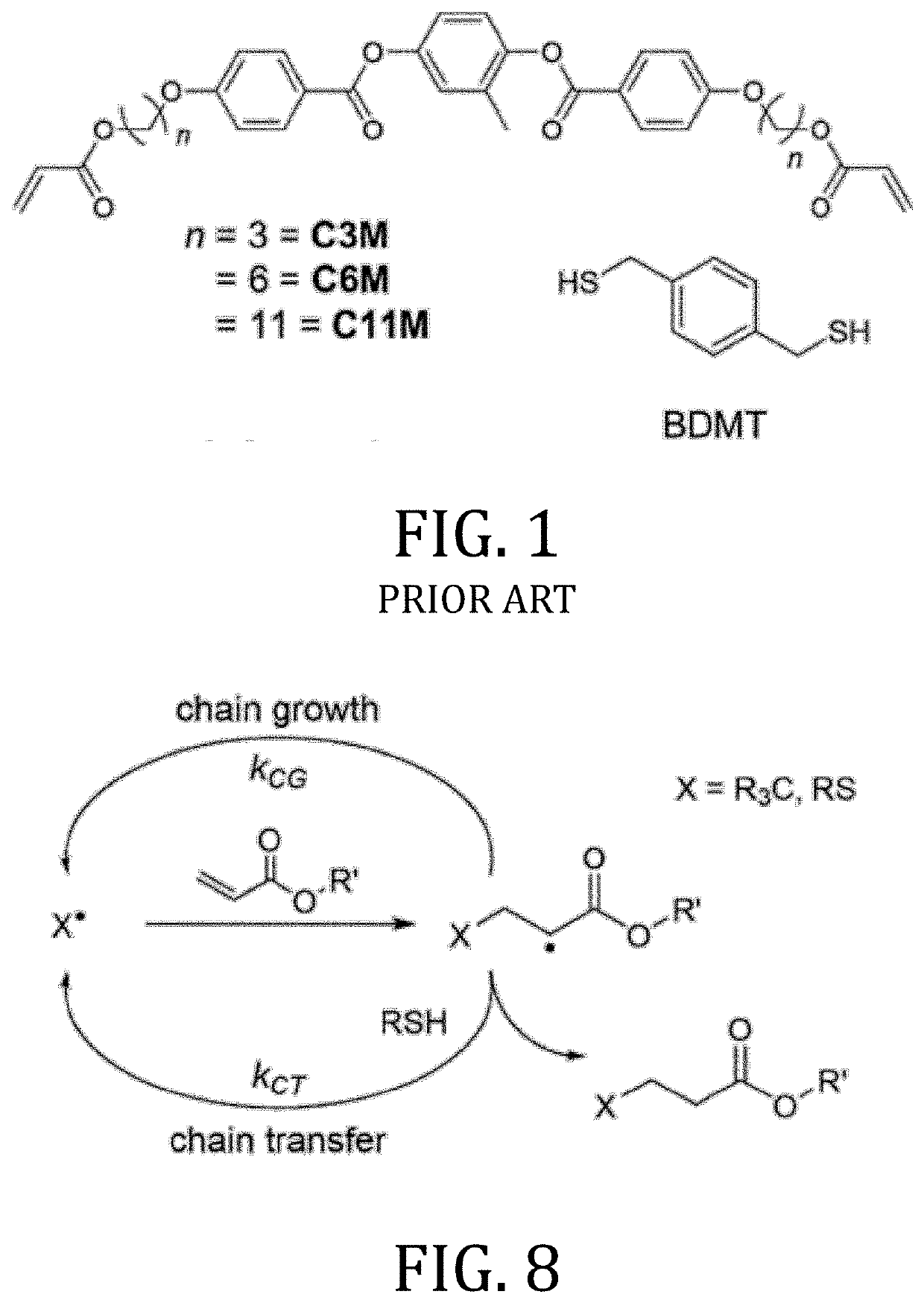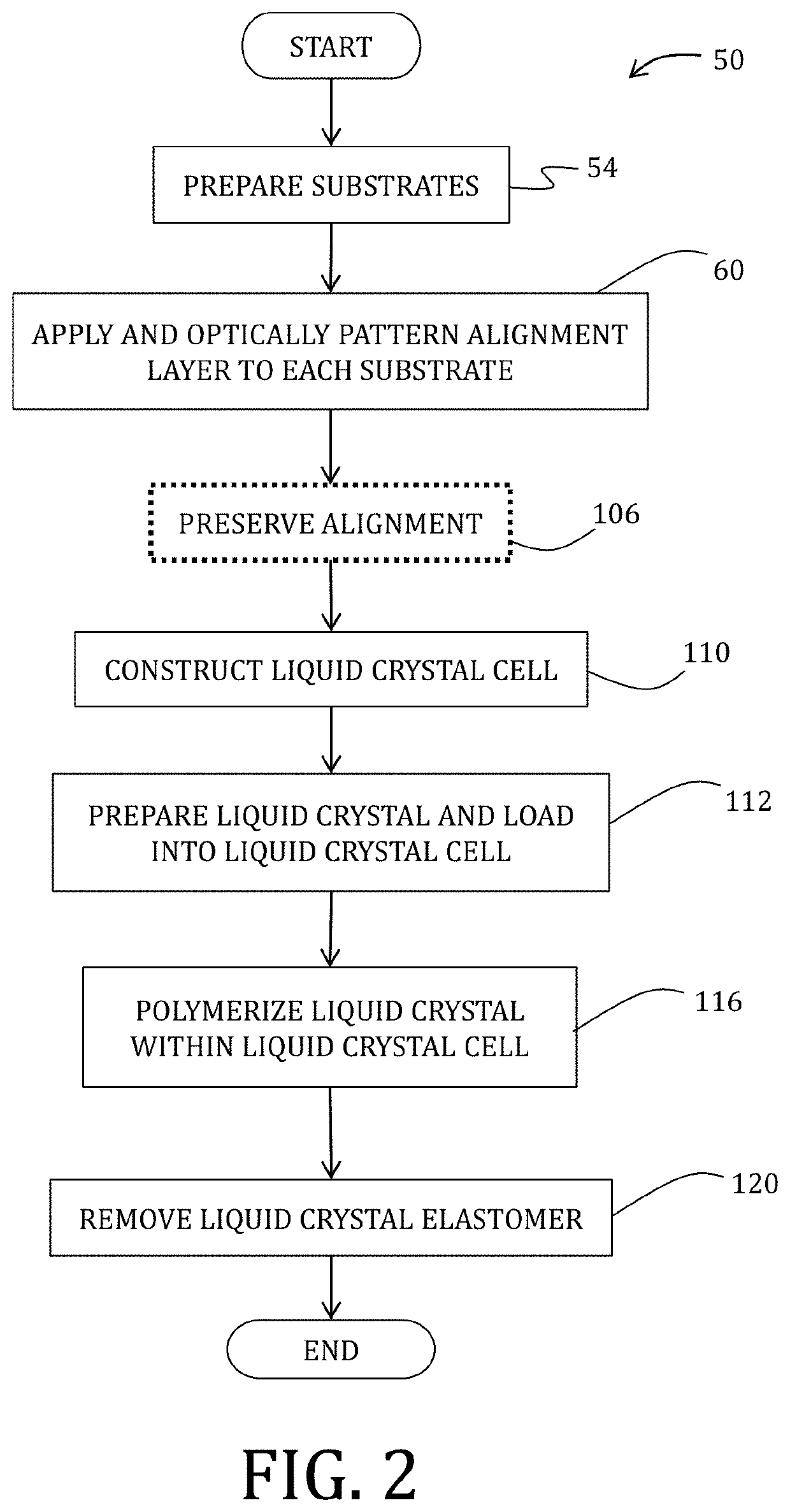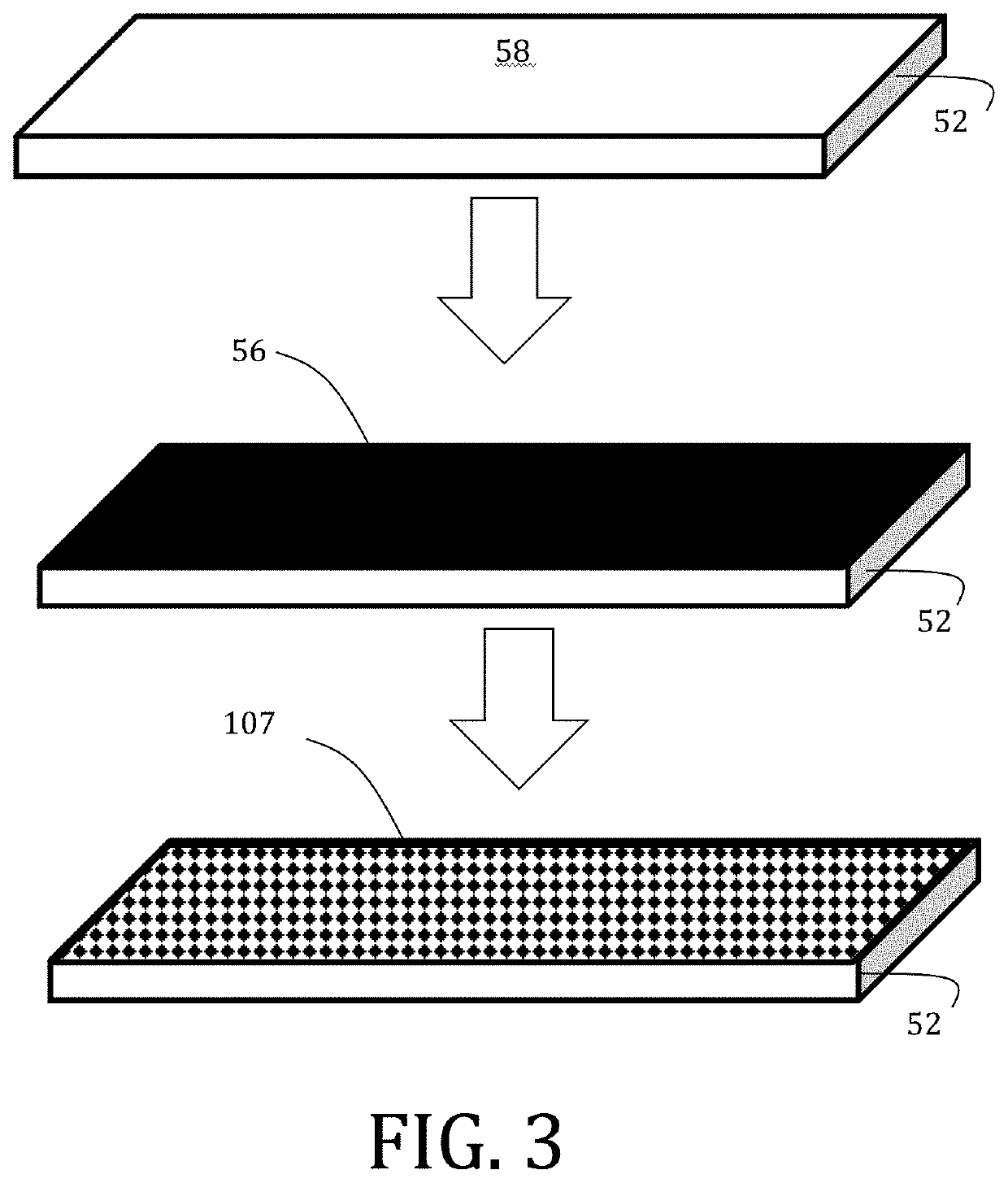Liquid crystal elastomers
a technology of elastomers and liquid crystals, applied in the direction of coatings, etc., can solve the problems of slow method, limited mechanical alignment of polysiloxane lces, and limit the optimum association of orientation and elasticity or actuation
- Summary
- Abstract
- Description
- Claims
- Application Information
AI Technical Summary
Benefits of technology
Problems solved by technology
Method used
Image
Examples
example 1
NSFER SYNTHESIS
[0115]“C3M” (1,4-bis[4-(3-acryloyloxybutyloxy)benzoyloxy]-2-methylbenzene), “C6M” (1,4-bis-[4-(6-acryloyloxyhexyloxy)benzoyloxy]-2-methylbenzene), and “C11M” (1,4-bis[4-(11-acryloyloxyundecyloxy)-benzoyloxy]-2-methylbenzene) were purchased from Synthon Chemicals. “BDMT” (1,4-benzenedimethanethiol) was purchased from TCI America. Irgacure 651 (2,2-dimethoxy-2-phenylacetophenone) was donated by BASF. Elvamide-8023R was donated by DuPont. PAAD-22 was purchased from Beam Co.
[0116]C3M, C6M, and C11M were recrystallized from methanol prior to usage. All other materials were used as received unless otherwise noted.
[0117]Liquid crystal cells were prepared. Briefly, for cells patterned using rubbed surfaces, Elvamide was dissolved in methanol at 0.125 wt %. This solution was then spin-coated onto plasma-cleaned glass and rubbed with a felt cloth to introduce uniaxial alignment. For photoaligned cells, PAAD-22 in dimethylformamide (0.33 wt %) was spin-coated onto plasma-cleaned...
example 2
[0141]The LCE films examined here were formulated by mixing mesogenic diacrylates (RM82 and RM257) with a dithiol CTA (FIGS. 1-3). RM82 (1,4-bis-[4-(6-acryloyloxyhexyloxy)benzoyloxy]-2-methylbenzene) and RM257 (1,4-Bis-[4-(3-acryloyloxypropyloxy)benzoyloxy]-2-methylbenzene) were purchased from Synthon Chemicals, and recrystallized from methanol before use. LCE formulations were prepared by adding 69 wt % RM82, 20 wt % RM257, 11 wt % BDMT (benzenedimethanethiol, Sigma Aldrich), with 1 wt % Irgacure 651 (BASF), and 0.5 wt % butylated hydroxytoluene to a glass vial and thoroughly mixed. The concentration of RM82 and RM257 in the mixture was selected to suppress the nematic-crystallization phase transition, producing a supercoiled mixture which was meta-stable (more than 1 hr) to −20° C.
[0142]50 μm thick liquid crystal cells, prepared as described above were filled via capillary action at 90° C. in the isotropic state and cooled slowly to 25° C. over 5 min. The cells were then exposed t...
PUM
| Property | Measurement | Unit |
|---|---|---|
| glass transition temperature | aaaaa | aaaaa |
| area | aaaaa | aaaaa |
| Linear polarization angles | aaaaa | aaaaa |
Abstract
Description
Claims
Application Information
 Login to View More
Login to View More - R&D
- Intellectual Property
- Life Sciences
- Materials
- Tech Scout
- Unparalleled Data Quality
- Higher Quality Content
- 60% Fewer Hallucinations
Browse by: Latest US Patents, China's latest patents, Technical Efficacy Thesaurus, Application Domain, Technology Topic, Popular Technical Reports.
© 2025 PatSnap. All rights reserved.Legal|Privacy policy|Modern Slavery Act Transparency Statement|Sitemap|About US| Contact US: help@patsnap.com



